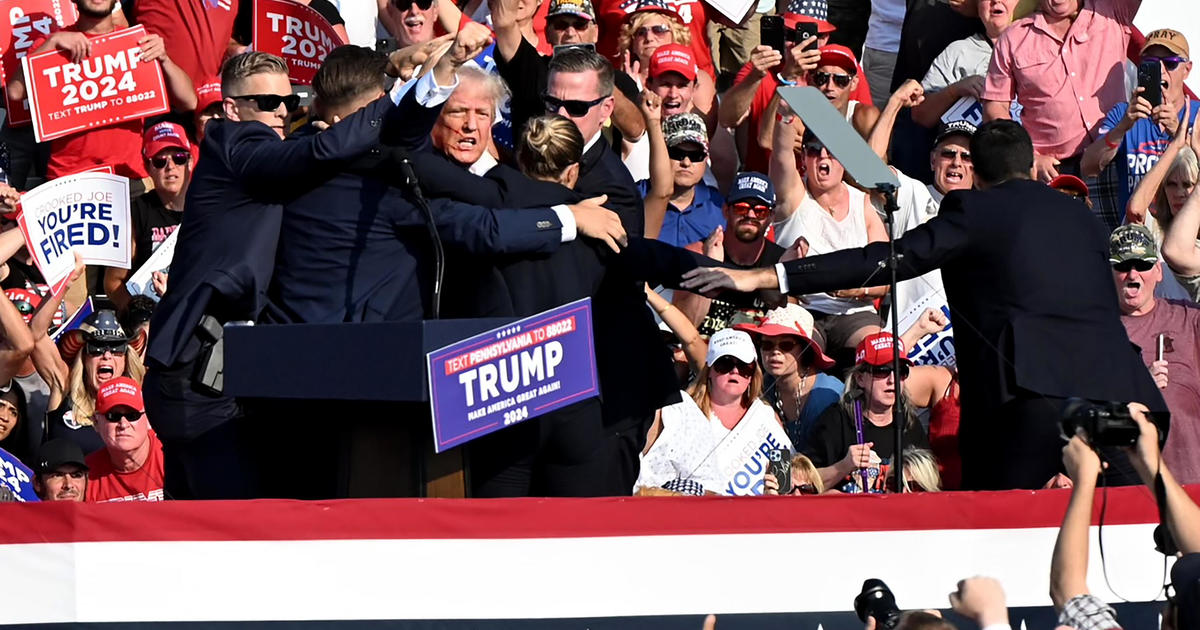An interim Senate report identifies planning, communications and security failures in the U.S. Secret Service’s advance and security efforts during former President Donald Trump’s July rally that “directly contributed” to the assassination attempt against him.
The 94-page report, released Wednesday morning, cited nearly half a dozen problems, including lack of a chain of command, poor coordination with state and local law enforcement, inadequate resources and equipment and a failure to effectively secure the site and ensure the safety of the former president at the Butler, Pennsylvania, incident.
The preliminary findings were part of a joint investigation with the Senate Homeland Security and Governmental Affairs Committee and the Permanent Subcommittee on Investigations.
“Every single one of these actions is directly related to a failure in the U.S. Secret Service’s planning, communications, intelligence sharing and law enforcement coordination efforts,” Chairman Gary Peters told reporters Tuesday ahead of the report’s release. “Every single one of those failures was preventable, and the consequences of those failures were dire.”
Gunman Thomas Crooks fired eight rounds with an AR-15 semiautomatic rifle from the roof of an adjacent building before he was killed by a countersniper, grazing Trump’s ear, killing one person at the rally and injuring three others in the July 13 shooting.
The Senate report says several Secret Service officials had chronic problems with their radios. In one instance, a Secret Service countersniper was offered a local radio to help with communications through the day, but he didn’t have time to pick it up because he was working on “fixing” his own Secret Service radio. Due to failures of radios on site in Butler, the special agent in charge gave away his radio to a lead advance agent and went without one for the rest of the day, according to the Senate report.
A text message sent by a Secret Service employee to a supervisor an hour before the shooting warned, “I’m not getting good comms on either my phone or radio. I’ll try to stay on[.]”
At the same time, the Secret Service’s drone units had “technical problems” — so much so, that at 4:33 p.m., the Secret Service employee operating the drone system had to call a toll-free helpline for support. The report notes the agent had only three months of experience working with that equipment and lacked knowledge about it.
The preliminary report also found that Secret Service personnel were notified about a suspicious person with a rangefinder 27 minutes before the shooting, but the lead service agent and other site officials told the panel they did not receive the information.
Another alert about an individual on the roof of a building was sent by radio from a local law enforcement officer to the Secret Service two minutes before the shooting. This was followed by another alert that the individual was armed, but the message was “not relayed” to key Secret Service personnel, the report stated.
“Leaving a roof unattended, just you know, barely over 100 yards from the podium with a direct line of sight was an unacceptable and inexcusable error,” said GOP Kentucky Senator Rand Paul, a ranking member on the committee. “Everybody thought this guy was suspicious and nobody thought to stop the proceeding and remove the former president from the stage.”
A counter sniper who was interviewed by the panel described seeing local law enforcement running toward the building where Crooks was positioned with guns drawn, but he did not alert Trump’s protective detail because it “did not cross [his] mind” to notify someone to get Trump off the stage.
According to the report, counter sniper teams were dispatched to Butler following “credible intelligence” of a threat, marking the first time this type of team was deployed to a protectee besides the president and vice president. However, nearly all the Secret Service personnel that spoke to the committee said they were unaware of the potential threat.
“Why am I hearing about threats on TV,” an agent wrote in a note after the shooting that was included in the report.
Members of the Secret Service advance team were also denied additional resources, according to the report, and “could not identify” who had final decision-making authority for the event.
“It was almost like an ‘Abbott and Costello’ farce with ‘who’s on first’ finger pointing by all of the different actors,” said Connecticut Senator Richard Blunmental, who heads the permanent investigative subcommittee. “It was really truth being stranger than fiction.”
The Secret Service has not commented on the report. Last week the agency issued findings from its own “Mission Assurance Review,” which found multiple communications issues and a lack of “due diligence” by the Secret Service.
Acting Secret Service Director Ronald Rowe testified before the committee in late July, shortly after the panel launched its investigation. So far, it has completed 12 interviews, reviewed approximately 2,800 documents and conducted a site visit in Butler. Additional interviews are expected in the coming weeks, but committee aides won’t say if the probe could expand to the second assassination attempt this month, which took place at Trump’s Florida golf club.
The committee issued several recommendations, including enhancing planning and coordination, communication and expanding intelligence assets and resources. It also suggested designating a “single individual” to approve the agency’s security plans.
“We’ve put a lot of meat on the bones here but we are a long way from getting the information we need,” said GOP Wisconsin Sen. Ron Johnson, ranking member of the investigative subcommittee.
Scott MacFarlane
contributed to this report.

